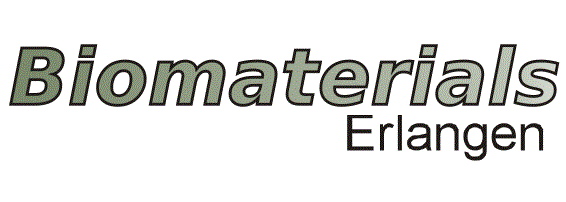Christian Radwansky
Christian Radwansky
Masterstudent
Evaluation of bioactive glass incorporated melt electrowritten scaffold with different geometry and pore size
Supervisors: Dr. Irem Unalan, Prof. Aldo R. Boccaccini
Additive manufacturing is a widely used method in biomedical applications. In particulary, the method of melt electrowriting (MEW) offers specific characteristics such as good control of the printing of microfibers, making it possible to create 3-D structures with adjustable geometry and pore size.1 In this regard, polycaprolactone (PCL), a biocompatible, biodegradable polyester with a low degradation rate, sufficient mechanical strength and excellent thermal properties, is a good candidate for fabricating biomedical structures fabricated via MEW.2 3D-printed hydrogels incorporated with bioactive glass (nano)particles are being investigated at the Erlangen Institute of Biomaterials.3
In this Master thesis, the physical, mechanical, chemical, and biological properties of PCL-based MEW derived scaffolds with incorporated bioactive glass will be investigated, considering their geometry and pore size.
[1] Loewner S, Heene S, Baroth T, et al. Recent advances in melt electro writing for tissue engineering for 3D printing of microporous scaffolds for tissue engineering. Front Bioeng Biotechnol. 2022;10(August):1-16. doi:10.3389/fbioe.2022.896719
[2] Abbasi N, Lee RSB, Ivanovski S, Love RM, Hamlet S. In vivo bone regeneration assessment of offset and gradient melt electrowritten (MEW) PCL scaffolds. Biomater Res. 2020;24(1):1-24. doi:10.1186/s40824-020-00196-1
[3] Monavari, M., et al., 3D printing of alginate dialdehyde-gelatin (ADA-GEL) hydrogels incorporating phytotherapeutic icariin loaded mesoporous SiO2 -CaO nanoparticles for bone tissue engineering. Materials Science and Engineering: C, 131 (2021) 112470. 2021;131:112470.

